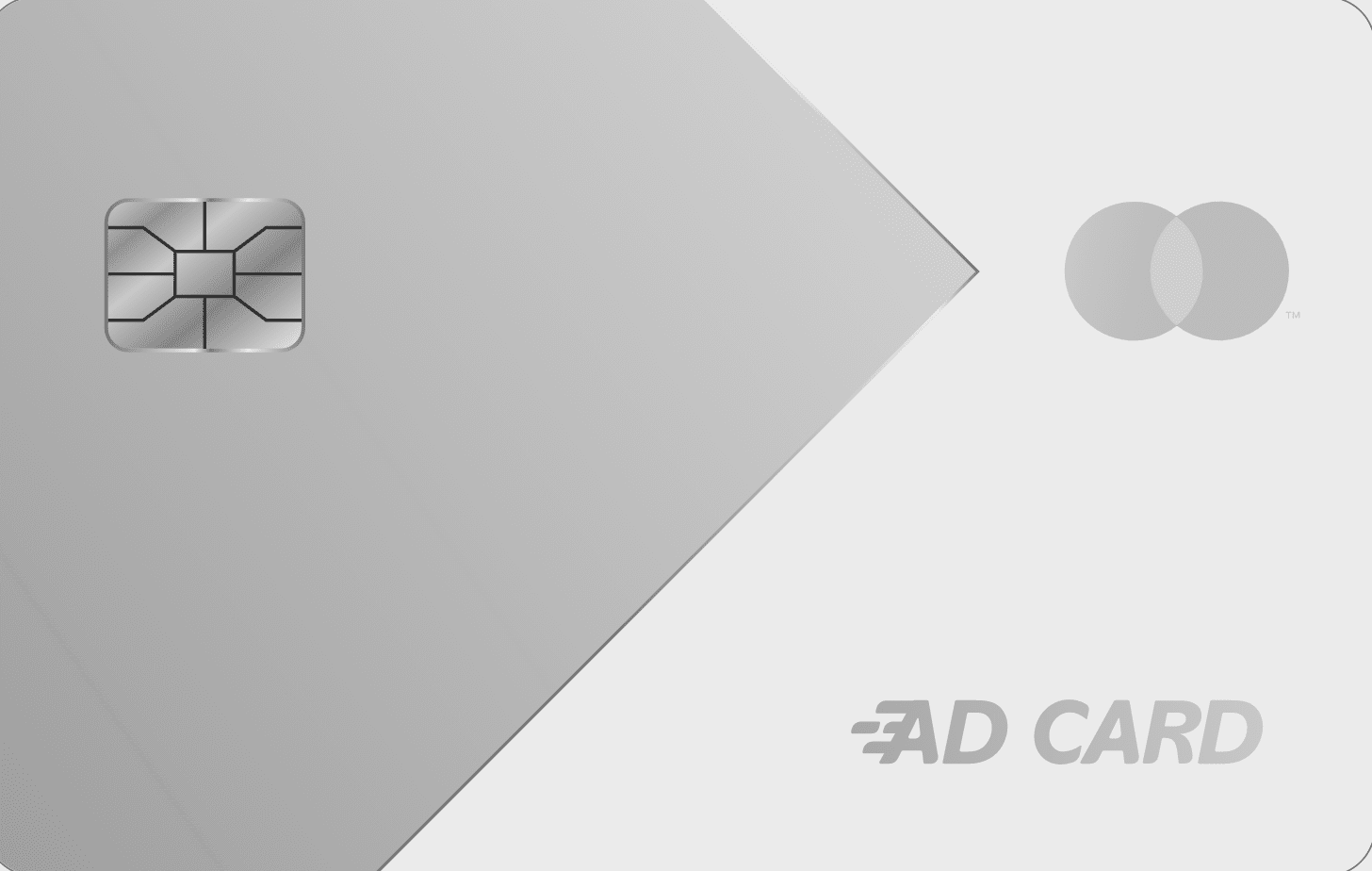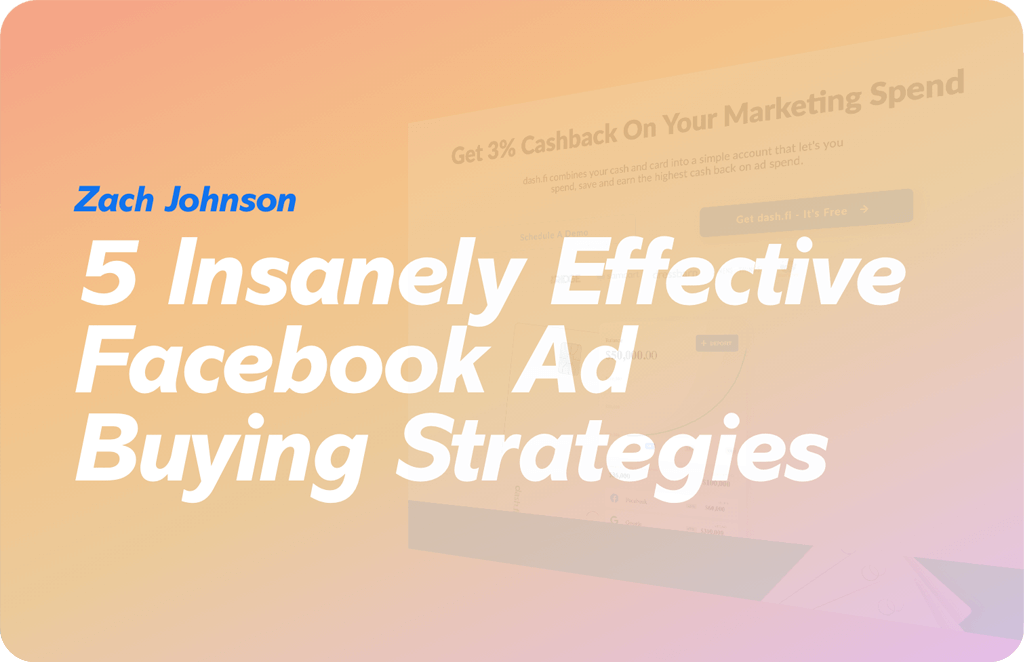Old-school marketing wisdom is still way cool when it comes to finding customers who are most likely to buy.
There’s an old marketing adage that goes “target your prospects, not your suspects” that still holds true today when it comes to Facebook ad buying strategies. Basically, it means that not everybody is your customer and that you’ll have much more success if you zero in on people who are most likely to purchase your product or service.

It seems like a “well, duh” kind of rule but it seems more than a few marketers have either never heard of it or cast it aside because doing the modeling work is too hard. As anecdotal proof, ask your (older) seriously lefty friends if they get rightwing oriented ads in their Facebook feeds. You’d be surprised how many will say yes. Evidence that advertisers are just broadly targeting by age and paying for clicks that go nowhere.
Become an expert on Facebook ad buying strategies.
So if you want to kick conversions into high gear, you need to become an expert on Facebook ad buying strategies that target your best prospects. For starters, you can look into different ad formats including messenger ads, carousel, mobile news feed ads, canvas ads, and more. Plus choose from literally thousands of ad targeting parameters

Honing your Facebook targeting strategy will make sure your message will reach very specific and highly motivated segments of your audience on a platform where Americans spend an average of 40 minutes a day browsing their news feeds and being exposed to ads.
So let’s take a look at some Facebook ad buying strategies that marketers have been using with great success for decades and that still work online today.
- 1Zero-in on the Recent Buying Behavior of Facebook Users
When Facebook first came on the scene it was viewed as simply entertainment with little potential for marketing products or gaining insights into consumer behavior.
That paradigm shifted forever in 2013 when Facebook joined forces with major league data brokers like Datalogix, Epsilon, and Acxiom. Thanks to their access to trillions of yearly data transactions, marketing powerhouse companies like Axicom claim that they have information on roughly 500 million active consumers worldwide, with an average of 1,500 data points per person.
Facebook unlocks the secrets of consumer buying behaviors.

All of a sudden Facebook gained near-absolute omniscience about customer behavior and preference. They knew how much time (if any) you were spending smashing sweets on Candy Crush Saga or whether you preferred Farmville instead. They had a good idea of when you were expecting a new baby. If you were taking prescription drugs to lower your cholesterol. And whether your musical beat danced to hip hop or bebop.
Facebook lets advertisers reach beyond the bounds of their own data.
What this meant is that advertisers were no longer chained to the limitations of their own CRM databases. Now they could get insights gathered from all kinds of customer loyalty programs and match them to individual users, They could use this data to target potential buyer segments by thousands of different purchasing behaviors.
This gave advertisers the power to reach out beyond their own CRM databases and tap into insights gleaned from shopper loyalty programs of all kinds and matched to individual user profiles. Facebook advertisers use this data to target audience segments by thousands of different purchasing behaviors.
And they are user-friendly with buyer profiles that identify those who are into Local History, Food & Drink, Beauty, and many more. But it doesn’t stop there. Facebook lets you further narrow down the purchasing behavior category to target Organic Food Enthusiasts, Horror Movie Fans, and most any other subset imaginable.
In addition, Facebook shows you how many user profiles you can target in each subcategory. Which they do, based on their aggregated, multi-sourced offline transaction-based data (i.e. the number of Facebook users in that category they’ve matched to offline purchasing data). The options and opportunities are practically unlimited.
Choose a third-party processor if: | Choose a merchant account if: |
You’re a small business that has 50 or fewer employees | You’re a bigger company with more than 50 employees |
You don’t do many transactions | You want more control |
You value simplicity | You want all transactions to occur within your platform |
You have bad or no credit | You want low transaction fees |
2. Target Life Events to Reach Customers When They Need What You’re Selling
If you’re a moving company, funeral home, or wedding photographer, you can target prospects who are in the midst of major life events. Facebook offers every kind of life event targeting option. How? Because consumers tend to post momentous changes in their lives to their timelines. You tell your friends (and Facebook) what’s happening in your life and Facebook tells advertisers.

But that’s not all. The Life Events filter lets you be even more targeted Because you can choose to target people at specific periods of time after the change. So say you were selling jewelry. You might choose to target people who got married a year ago so they could buy a gift for their one-year anniversary. The date ranges options are 3 months, 6 months, and one year out from the Life Event.
3. Warm Up Leads & Build Brand Loyalty with Custom Audiences
Staying in touch with your current contacts is a great way to make sales and build your business. And the Facebook Custom Audience feature makes it easy to do. Making sure your product or service is always top of mind for existing customers and app users on their favorite social network not only reinforces your brand. But it also gives you the chance to boost lifetime customer value, loyalty, and order frequency. Again an old marketing adage that says, the customer who is most likely to buy from you is one who just bought from you.
Custom Audiences Bring People In – and Leaves Them Out.
Remember targeting your prospects rather than suspects? You can increase the efficacy of your campaigns and avoid wasted clicks by doing things like excluding your existing customer list if you’re offering a free trial to new users. Relevancy sells.

You can Custom Audiences by uploading your customer phone list, or purchaser/subscriber email list in CSV or TXT format, to Facebook. What’s more, you can also set up a Custom Audience based on your site visitors, specific pages visited on your site, or on designated actions taken on your game or app.
You can then include or exclude the whole list, or just specific subsets of it using other targeting filters to lock onto your most responsive Facebook audience.
This is serious marketing on steroids. This thing is so precise that it will let you do things like targeting your current customers, but only those who have a specific job function. People who make a certain amount of money. And live in an upscale zip code. With this targeting, you may be able to sell more expensive items to what should be your more affluent customers.
Always test your targeting assumptions.
It would be natural to assume that richer customers would be more inclined to purchase spendier products than poorer ones. But you won’t know if you don’t challenge that assumption by presenting your offer to less affluent customers. A certain credit card company once made the “mistake” of sending an upscale offering to people who had a little less than excellent credit, and it worked like gangbusters. Unlike the super affluent, they hadn’t become jaded by a constant stream of fawning offers and so felt special – and inclined to take advantage of it.
Another way to use Custom Audiences is to target people who visited your blog and offer a demo or some other step closer to buying. Further warming up these prospects who already know and like you could lead to significant sales.
Again, Facebook offers almost endless options when it comes to the different demographics you can target and combine is staggering. Choose from filters like marital status, net worth, living arrangements, interests, location, and more.
4. Find New Customers Who Look Like Your Old Customers
Facebook’s option to target Lookalike Audiences is the next logical step to take after you have a solid Custom Audiences strategy in place. The great thing is that you can do this, even if you don’t have your own email or phone list, Lookalike Audiences let you go ebeyond your reach but still target people with highly specific profiles, by creating audiences that mirror the profiles of your own successful targets.

Don’t have a list or a big Facebook following? No problem. You can use a tracking pixel to create a Lookalike Audience that will give you a Website Custom Audience to match.
Once you’ve decided which audience you want to replicate and expand on, you can make broaden your audience larger or make it specific and similar to your original audience. If you choose the most similar level, Facebook will target the top 1 percent of users with similar traits. If you want to optimize for reach, Facebook will show your ads to the 10 percent of users who are most like your target audience.
5. Drill Down to Strike it Rich with Layered Targeting Options
If one layer is good, multiple layers are better. The ability to layer targeting options one on top of the other over time (hyper-targeting) will make your audience more and more specific. Yes, you can actually use combinations of behaviors, demographics, and geolocation data to reduce your audience to as little as one person. (It has happened). However, the real value however is the ability to powerful craft ad creative and offers to appeal to smaller audiences that you create using combinations of data. Smoked oyster ice cream anyone? Very small audience but likely to be very hungry for your unique offering.

If you can understand the intent, needs, and likelihood of response ford any given audience segment, you can use Facebook layering options to harness the power of unique wants and needs and get your offer in front of those who will be eager to buy.
The Best Facebook Ad Buying Strategies are Diversified and Wide-Ranging
To begin laying out your Facebook ad buying strategies, first, create profiles for your most lucrative customers. Figure out who they are, where they live. What do they do for work and where do they look for pleasure. What traits and characteristics do they have? Once you know that then compare those attributes with the wide ranges of targeting parameters Facebook offers.
Identifying your ideal customer will let you use Facebook’s ad targeting tools to separate your prospects from your suspects – and allow you to create insanely effective Facebook ad buying strategies.



